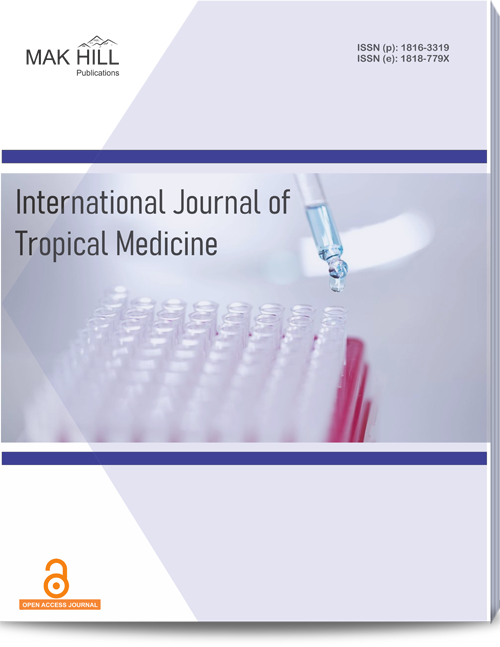
International Journal of Tropical Medicine
ISSN: Online 1818-779XISSN: Print 1816-3319
175
Views
21
Downloads
Abstract
Anemia, caused by micronutrient deficiencies, is a prevalent hematological disorder worldwide. Iron deficiency compromises immune response, while leukocyte count alterations and ischemia are associated. This study aimed to estimate leukocyte counts, neutrophil-to-lymphocyte ratio (N/L ratio) and platelet count in anemia, highlighting the N/L ratio's relevance in ischemic heart disease (IHD). The study included 100 patients (both sexes) with nutritional anemia, defined as hemoglobin levels <6 g%. They were compared to 100 healthy subjects of the same age group. Parameters analyzed were total leukocyte count (TLC), differential leukocyte count (DLC), neutrophil-to-lymphocyte ratio (N/L ratio) and platelet count. TLC exhibited no significant difference between anemic subjects and the control group. However, the DLC analysis revealed a significant increase in absolute neutrophil count, a significant decrease in absolute lymphocyte count and a non-significant increase in eosinophil and basophil count. Anemic subjects displayed associated poikilocytosis and anisocytosis of red blood cells. The N/L ratio was significantly higher in the anemic group. Moreover, the platelet count was significantly lower in anemic patients compared to the control subjects. Our study findings emphasize the impact of nutritional anemia on immunity, particularly cellular immunity. The elevated N/L ratio observed in anemia is associated with IHD. Additionally, severe anemia is correlated with thrombocytopenia. These associations highlight broader implications of anemia on immune function and its potential links to cardiovascular health.
How to cite this article:
Priyanka Solanki , Saurabh Singh Tomar, Minu Bakna and Sonu Rawat . Correlation Between Anemia and Leukocyte and Platelet Counts among Central India Population: A Case-Control Study.
DOI: https://doi.org/10.36478/10.59218\makijtm.2023.7.11
URL: https://www.makhillpublications.co/view-article/1816-3319/10.59218\makijtm.2023.7.11